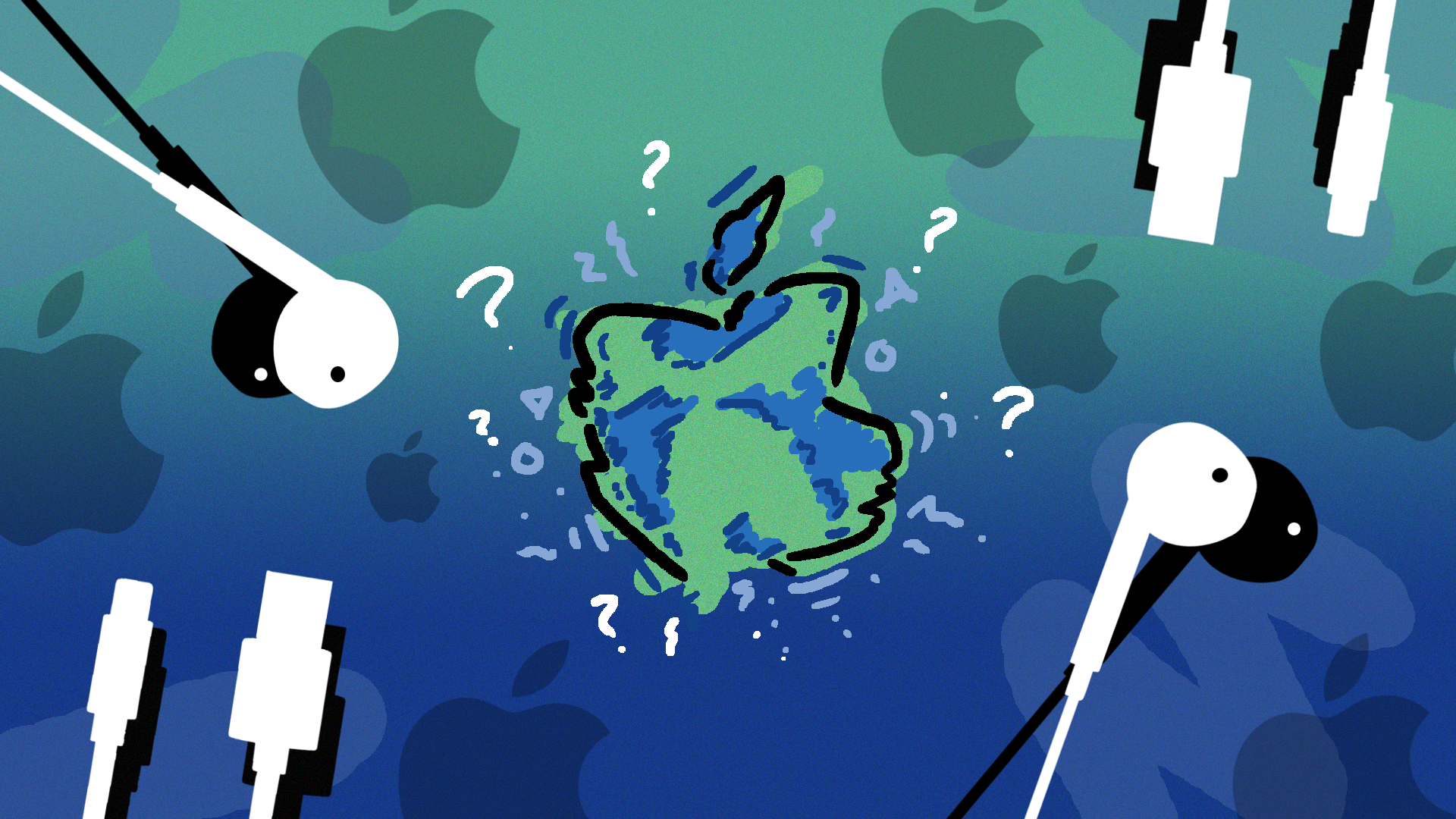How will this actually help the environment?
With that being said, this move will have some long-term benefits for the environment.
Apple is assuming that most people already own chargers, wires, and earphones from previous iPhones, which makes sense given that over 2 billion Apple power adapters are currently in global circulation. Removing these items as standard moving forward will reduce the quantity of precious materials needed for production while also allowing iPhone packaging to be smaller and more efficient to transport. Apple claims this will cut its overall carbon emissions down by 2 million metric tons per year, which is the equivalent of 450,000 cars on the roads.
All this certainly sounds good and those numbers will make for excellent marketing material further down the road, I’m sure. But removing a few items from each iPhone sale does little to address the growing problem of electronic waste, or e-waste, that’s predicted to reach 74 million metric tons by 2030 according to the latest Global E-Waste Monitor 2020 report.
In fact, chargers only make up a whopping 0.1% of the total annual e-waste increase, which is around 54,000 metric tons. Apple’s own chargers account for half of that total at best, which means they’re responsible for approximately 0.05% of all e-waste at a maximum. Cutting out chargers and earphones from iPhones will save on carbon, sure, but the financial benefits for Apple far outweigh the sustainability positives on a larger scale.
Keep in mind that it’s still producing chargers, too – they’re not disappearing and will still eventually end up as e-waste. You just have to buy them separately now and, unsurprisingly, Apple has faced a bunch of criticism and memes online since this announcement.
The company has had a habit of removing useful features and ports from existing products for quite a few years. It was the first to fully ditch headphone jacks in favour of lightning ports and has slowly removed SD card slots, HDMI, and other useful ports from its newer Mac laptops.
The usual, immediate response to these decisions is begrudging acceptance. Most of us have to use Apple products in some capacity for work or personal communication, which means we’ll still be buying them further down the line regardless of how inconvenient they become. Removal of features and add-ons just means forking out more cash for them as standalone items and rarely discourages people from never using them again. Want to use your old headphones on your new iPad? You’ll need a £30 adapter for a feature that used to be included in the box. You can see why people get frustrated.
This is a similar situation. We’re accustomed to buying phones that come with everything we need all in one, and if you’re a first time iPhone user you’ll now have to buy three separate products just to use the damn thing. These consumers will actually be producing more package waste than if they’d bought an older iPhone too, as they’ll need three items, in three boxes, potentially from three sellers. That’s a far larger overall carbon footprint compared to the traditional iPhone box, which makes this whole thing redundant.
What could Apple do to genuinely help the environment?
Instead of making customers pay more for products they’ll most likely buy anyway, Apple could invest much more in the sustainable disposal of e-waste, of which it is partially responsible.
Much of the e-waste produced in the US ends up in developing nations illegally, where it’s recycled in unregulated ways that involve incinerating materials and workers operate without protective equipment. It’s unethical and unsafe, and as of yet Apple hasn’t properly announced any support or investment in facilities that can manage the hefty loads of e-waste it produces. It has a few recycling robots called Daisy and Liam in the US, but these aren’t enough to compensate for the environmental damage it causes outside of the west.
The company does have some merits to genuinely shout about. Apple has now been running entirely on renewable energy for over two years – which includes all of its retail stores worldwide – and has made newer iterations of its products more energy efficient. These are commendable achievements and prove that Apple is serious about the environment in certain aspects.
E-waste continues to be a huge issue that it hasn’t properly addressed, though, and the UK Parliament accused Apple of not taking its environmental obligations ‘seriously enough’ in September. When asked to respond to an appearance request in the House of Commons regarding e-waste, CEO Tim Cook was a no show.
So, this new initiative to reduce carbon emissions looks unlikely to shake things up in a meaningful way, at least as far as climate impact is concerned. We’re more likely to see a difference in Apple’s profit margins over anything else, and until the company announces big reform outside of the US, or actually shows up to hearings, it’s probably best to remain sceptical.
Hang on to your current chargers and earphones. Unless you want to hand over more cash, you’ll be needing them for the foreseeable future.




















